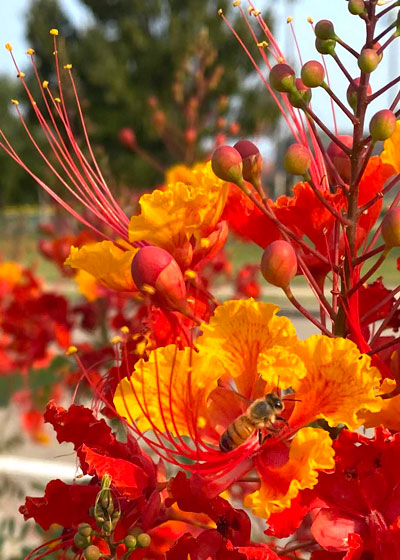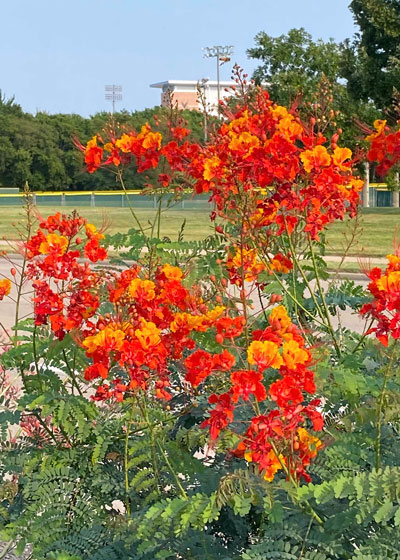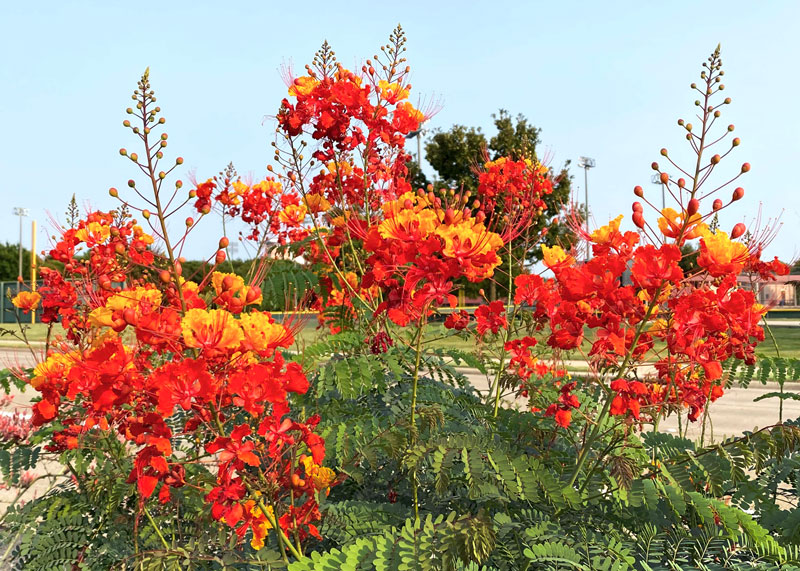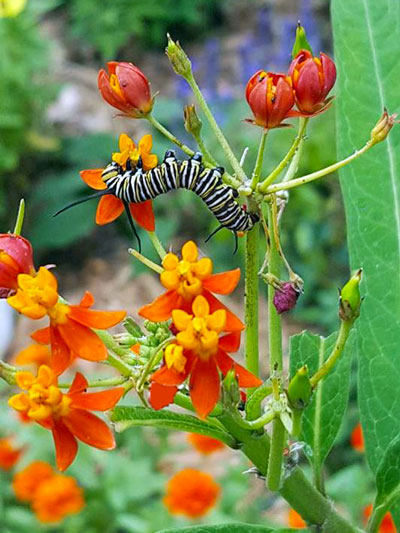Mexican bird of paradise

Texans are in love with this sub-tropical shrub, and certainly with reason. It loves the heat and our intense summer sun, and it provides stunning color for six months out of the year.


Details to learn…
If you’re going to grow it, you need to know it:
• Mexican bird of paradise. Other names: Red bird of paradise. Dwarf poinciana. Pride of Barbados. And its botanical name: Caesalpinia pulcherrima.
• Root-hardy to Zone 8 (may come back from roots in the I-20 corridor). Zone 9 may lose its leaves. Zone 10 may be evergreen shrub. (I’ve tempered those predictions after last February!)
• Needs full sun, good drainage.
• Grows to 6 to 8 ft. tall and wide, but not as large in North Texas due to shorter growing seasons.
• Blooms best when given good garden soil, regular feedings and frequent waterings.
• Popular with honeybees and colorful butterflies.
• Available in nurseries in late spring and summer, once they begin to get their summer tropical supplies.


